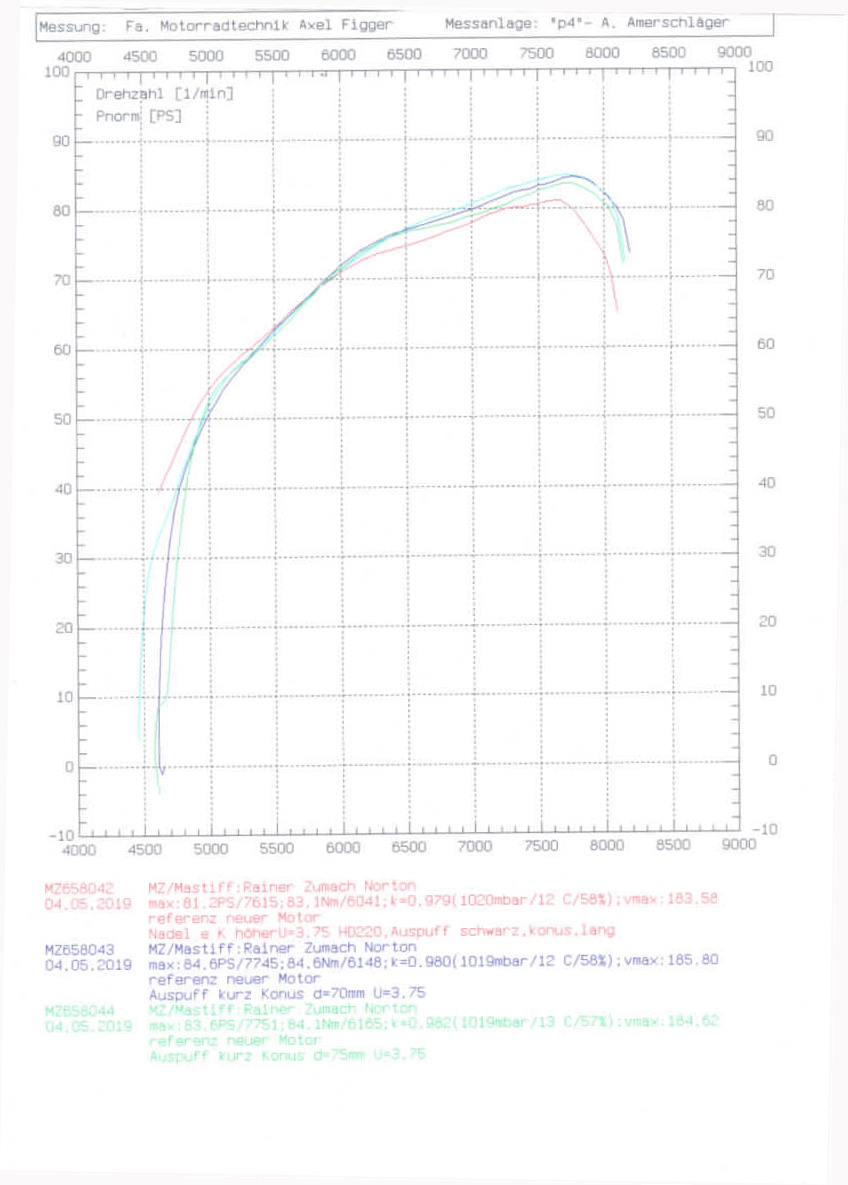A bit of background around Rainer's racer....I have to say I live in Perth, Australia and Rainer is in Germany so I dont know every little bit of the built but we are chatting often enough.
The built started a few years ago. Rainer decided to stay in the 750 class so it had to be a 750 Norton engine. We found a Commando engine in good shape (low 200000 engine number). Now the challenge was to get as much HP out of the engine as possible. The targeted figure was always around 85HP.
Rainer started with building the frame around the Commando Engine/gearbox combo...
After the basic concept was done, he concentrated on the engine. He got assistance by one of his mates who has been expert on tuning Triumph engines for classic racing for decades. The mods I know of:
- JS conrods and pistons (engine is now at 11:1)
- JS camshaft
- Aluminium barrels (I think Maney)
- stock crankshaft (this one had to be replaced during the process as the first one had a hairline crack after a few dyno runs at 8500rpm)
- 36mm Mikuni carbs
- original crankcase (oil pick up improved)
- original head (improved with reangled valve guides, 41mm/39mm valves, ported)
- Sachse electronic ignition
Gearbox and primary is stock Commando.
The first dyno runs were rather disappointing, too far away from the targeted figure. Plenty more improvements had to be made. The carburettors were changed to 36mm and jet sizes ajdusted on the dyno. Relatively short velocity stacks were used, pic below shows the final stage. The big box and the intake tubes you see on the original posts's photo are just to make sure that there is enough air even at high speed for the carbs. Apparently at high speeds there is a local air pressure drop 'inside' the bike due to the air stream around the bike. The air box is supposed to avoid that. All dyno runs were done without the box.

The exhaust had a massive influence on the power output. They experimented with the length of the reverso cone of the mufflers. At some stage a change increased the max power by about 10HP! During the built he got custom header pipes made up, not exactly sure how it affected the performance though. See photo below. Mind the port for Lambda sensor so he can do final adjustments on site, depending on the air conditions and the influence of the air box.
Short before the end they still coulndt get beyond 80HP. One of the final improvements was increasing the port size to the absolute maximum. So in the end they achieved the desired 85HP at the crank.
Someone here questioned the credibility of the dyno. One can never be sure but this dyno has been used for quite some time for classic Triumph tuning (very successful) and these bikes had been on other dynos as well. It shouldnt be too far off. But the truth will be on the salt

We are all very excited to be there either way.


